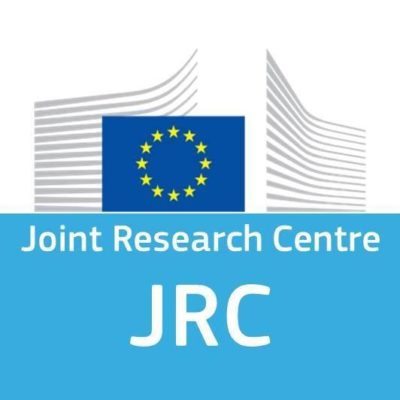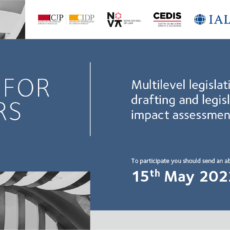
The Joint Research Centre (JRC) of the European Commission has carried out a study on Better Regulation, entitled “The debate on the EU Better Regulation Agenda: a literature review”.
The aim of the report is to provide an overview of the literature debate addressing the BR Agenda adopted by the European Commission in 2015 (henceforth indicated as BR 2015) and it contributes to the Stocktaking of the Commission’s Better Regulation approach.
The assessment of BR 2015 is difficult because 1) it will take several years before the outcome of the agenda can be evaluated fully 2) it is complex, multi-faceted nature it has an impact also on the other institutional actors 3) it is influenced by external pressure, such as international negotiations and 4) there is no counterfactual of how EU legislation would look if the BR did not exist so, in the absence of agreed indicators, it is difficult to draw definitive conclusions on performance of the BR .
The majority of the a welcome authors welcome the ambition of the reform and at least one or more specific aspects of the BR 2015, which are seen as further strengthening the EU regulation system. OECD (2018) defines the EU as the most ambitious regional regulatory co-operation framework involving supranational regulatory powers.
However, while the actual implementation is a key issue (as shown by the remarks reported in the previous sections), many critical elements emerge at a more general level, as well. While the term ‘better’ implies an evaluation element, this doesn’t necessarily mean that it delivers high quality regulation, or that the very notion of regulatory quality is accepted by every player.
One of the main questions is how to reconcile the increasing tension in the EU between different paradigms of regulation. Regulation can be ‘better’ because it conforms to the political preferences of citizens or because it meets technical standards, able to improve its ‘objective’ quality.
The EU has two avenues to respond, which are both observed in the debate: to double down on the regulatory model or to replace it with a more transparent political way of defining the BR (Dawson 2016). In this choice, the EC may be constrained by external pressure (Alemanno 2015; Dawson 2016). Some authors argue instead that the tools and procedures of the BR 2015 will be used and gamed according to political logics, and that the justification of political choices with BR tools will contribute to the further ‘technocratisation’ of EU policy-making (Wegrich 2015). Another critique is that the BR operates on the basis of several unproven assumptions, generates an enormous administrative burden, has serious cost implications and may overlook certain negative constitutional, social and environmental impacts by leaving gaps and circumventing possibly controversial topics (Garben and Govaere 2018; van Schagen 2017). Others note that the EU Better Regulation Agenda is still coping with a number of existential dilemmas (for example, is it a cost-cutting agenda or a policycoherence agenda?); existing imperfections in the policy cycle; and governance problems (Renda 2017a). Authors also point to some contradictory elements of the BR 2015, such as the one between the aims to streamline policy-making and the ambition to ensure meaningful consultation (Eliantonio and Spendzharova 2017).
On this basis, the following recommendations are made:
1. Make a full and timely independent evaluation of the BR 2015 (Impact Assessment Institute 2017).
(a) Improve monitoring and reporting on the BR, both for the EC, the EP and the Council (Impact Assessment Institute 2017), as well as in cooperation with the MSs (Golberg 2018).
(b) Clarify the evidence base for the postulated problems the BR 2015 tries to address and be able to prove its own ‘added value’ (Garben 2018).
(c) Abandon the Commission-centric approach. To measure progress, the focus has to be on the MSs and stakeholders (Impact Assessment Institute 2017).
2. Actions on the BR need to be more widely communicated by the EC, the other European institutions, the MSs and the many organisations that are active in the process (Golberg 2018).
3. Develop a renewed narrative.
(a) The EU does not regulate to impose costs, but to bring benefits (Golberg 2018; Radaelli 2018).
(b) Address citizens’ pressures and perceptions of deficiencies in EU rule-making (Garben and Govaere 2018). The success of the BR depends also on the regain of confidence of all sides of the civil society, achieved through a balanced implementation approach (Delogu 2016).
4. Ensure strong political commitment by the EU and the MSs, and administrative discipline in applying the BR (Cărăuşan 2016; Delogu 2016; Golberg 2018). Prompt and constructive co-operation is required from all of the actors participating and benefitting from policy-making, including stakeholders and Think Tanks (Meads and Allio 2015).
5. Adapt the BR strategy to the changing nature of EU law-making which is increasingly focusing on implementation by direct EU-level institutions instead of secondary legislation implemented by MSs (Meads and Allio 2015).
6. For the next EC, primary issues are the relation between subsidiarity and the BR; the relation between regulation and innovation; the evolution of the RSB; the added value of the IIA; the delivery of a set of robust evaluations (Radaelli 2018).
In short, authors underline the importance of more widely communicating actions taken within the BR framework, and of developing a renewed narrative which highlights the benefits of EU regulation. They also acknowledge that success of the BR depends, ultimately, on effective and constructive cooperation from all of the actors participating in and benefitting from policy-making.
Read the full report here.






